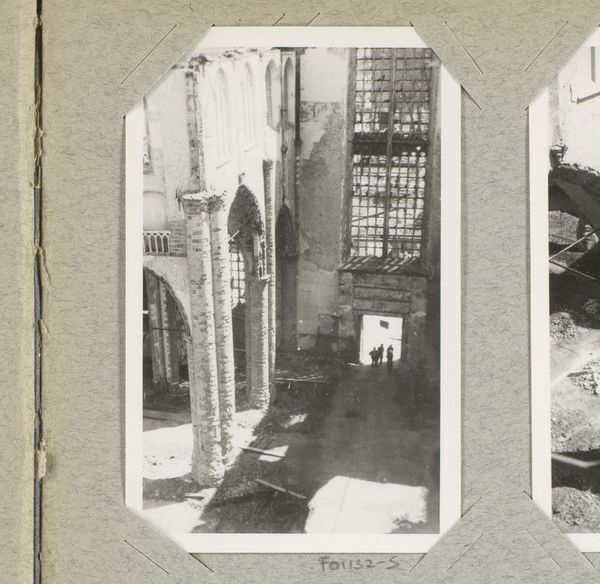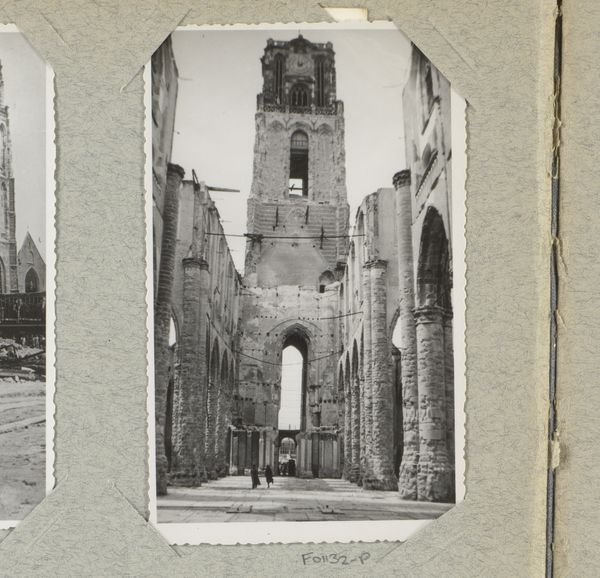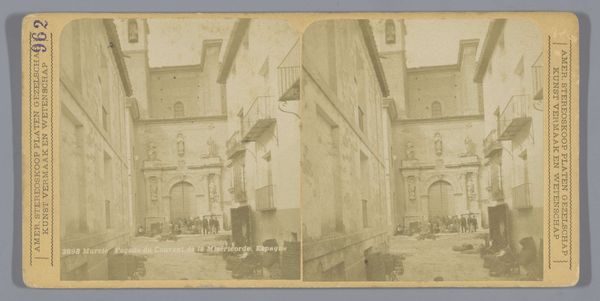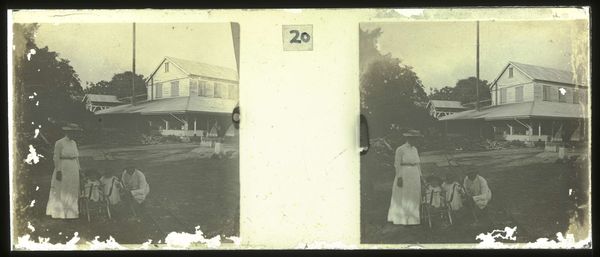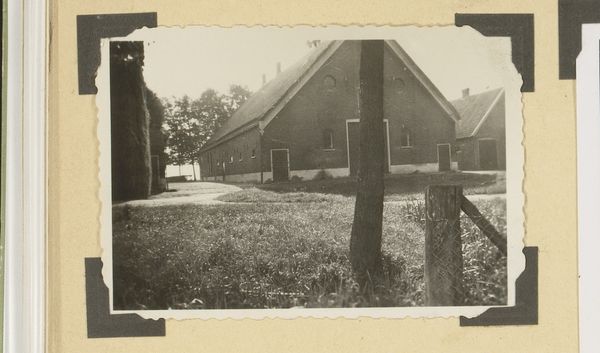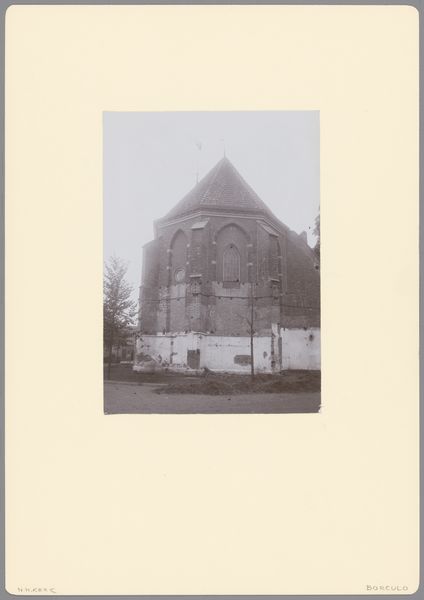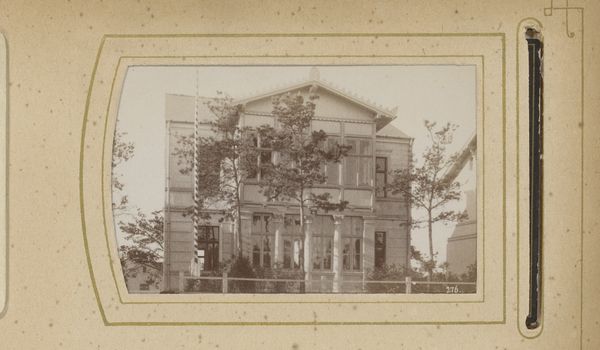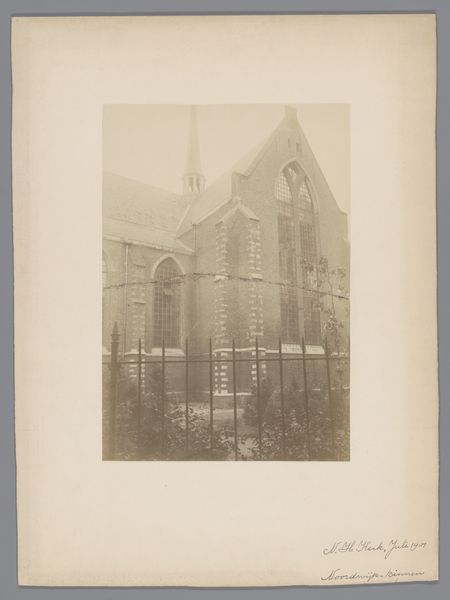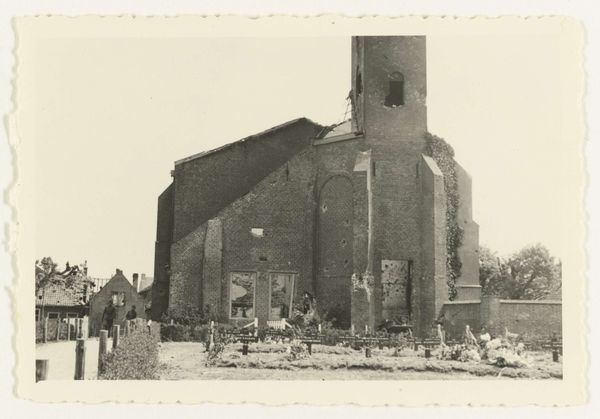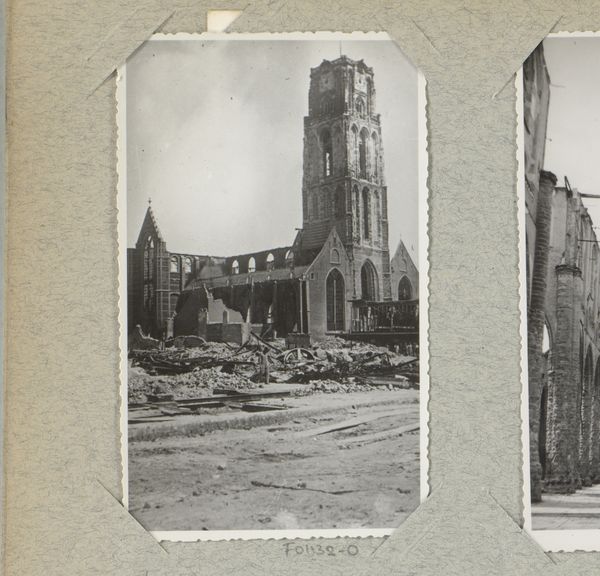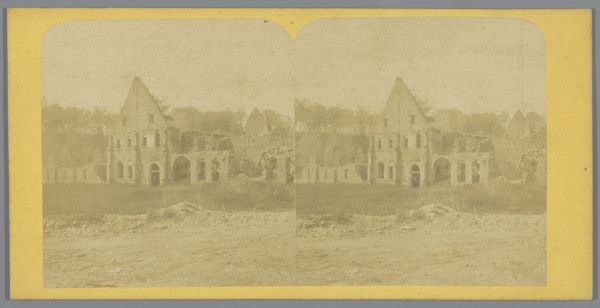
photography, gelatin-silver-print
#
landscape
#
archive photography
#
photography
#
gelatin-silver-print
#
modernism
Dimensions: height 136 mm, width 88 mm
Copyright: Rijks Museum: Open Domain
Curator: The stark geometry immediately grabs me. Before us is a gelatin-silver print entitled *Ruïnes van de Westerkerk en de Kruiskade te Rotterdam*, or *Ruins of the Westerkerk and the Kruiskade in Rotterdam*, captured by J. Nolte sometime between 1940 and 1945. What’s your initial read of it? Editor: Utter desolation. The muted tones and fractured architecture evoke a sense of profound loss. You can almost feel the dust settling in the air. Curator: The composition emphasizes that destruction; Nolte carefully positions the camera to underscore the church’s ravaged facade and its interplay with the angular debris. Look how the rose window, usually a symbol of wholeness, is shattered, almost like an open wound. Editor: Absolutely. The ruins aren't just architectural; they're emblematic of a society fractured by war. Note how the figures are positioned almost as silhouettes – anonymous victims in a landscape of trauma. Were there particular constraints when the photograph was taken and published? Curator: Undoubtedly. Consider the period. The image probably documents the aftermath of the Rotterdam Blitz in 1940. It employs sharp focus and meticulous framing—attributes that enhance both its documentary function and its subtle formal appeal. It encapsulates modernism’s push to find structure and form, even amidst chaos. Editor: While the photographic qualities are clear, isn't it imperative to recognize the wartime environment? These kinds of images become cultural artifacts—ones that record and shape memories, while forcing viewers to remember a shared traumatic history. The use of photography would be loaded at this time, yes? Curator: Precisely. The interplay of light and shadow contributes to a powerful spatial composition. Editor: And while doing so, these images prompt difficult but essential questions about representation, and the politics surrounding collective memory in wartime, especially now, given that photography continues to change and shape politics on an ongoing basis. Curator: I appreciate that—the picture continues to resonate, given our understanding of the modernist style. Editor: Indeed. Thanks to the way in which Nolte decided to frame these ruins, and their inhabitants, its status has changed from simple record, to being recontextualized in current historical and cultural moments.
Comments
No comments
Be the first to comment and join the conversation on the ultimate creative platform.
